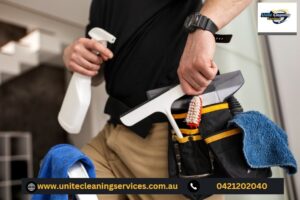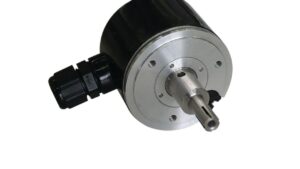How to Effectively Assess the Quality of Used Office Equipment

We live in a fast-paced world of business. Companies of all sizes are always on the lookout for ways to reduce expenses without compromising on quality.
One popular option is to buy used office equipment. This approach can be both eco-friendly and budget-friendly. They allow businesses to get high-quality items at a fraction of the cost.
But how do you ensure that the pre-owned office equipment you’re considering is up to par? We’ve got you. This guide will walk you through everything you need to know to make informed decisions when buying used office furniture.
Let’s dive in!
Understand Your Needs and Requirements
Before you even start looking at used office equipment, it’s crucial to have a clear understanding of your needs. What kind of equipment are you looking for? Is it desks, chairs, computers, or printers?
Knowing what you need will help you stay focused. It can help you avoid getting distracted by items that don’t meet your requirements.
Assess your office space to determine the size and type of furniture that will fit best. Measure the dimensions of your available space and make a list of the items you need. This preparation will save you time and help you make more informed choices when you start shopping.
Do Your Homework
When buying secondhand office furniture or pre-owned office electronics, knowledge is power. Research the brands and models you’re interested in.
Read reviews and check out forums to see what other people have to say about them. This research will give you a good idea of the product’s durability, common issues, and overall quality.
If you’re considering refurbished office equipment, such as computers or printers, look for models known for their longevity and performance. Check for any recalls or known defects that could affect your decision. Being well-informed will help you avoid making costly mistakes.
For example, if you’re buying used cubicles, know the recommended dimensions and weight capacity for each cubicle. This knowledge will help you avoid purchasing cubicles that are too small or not sturdy enough for your employees.
Inspect for Physical Damage
One of the first things you should do when assessing used office equipment is a thorough physical inspection. Look for any visible signs of damage, such as scratches, dents, or cracks. These could be indicators of rough handling or poor maintenance.
For furniture, check the structural integrity. Sit on chairs to see if they wobble or make any unusual noises. Open and close drawers to ensure they operate smoothly.
A good rule of thumb is to inspect the item as if you were buying it new. This way, you can catch any potential issues and avoid buying faulty equipment.
For electronic devices, inspect the screen for any dead pixels. Check the ports for any signs of wear and tear.
A word of caution, though – don’t let minor cosmetic damage deter you from buying an otherwise good product. These imperfections can often be easily fixed, and you may end up getting a great deal on a high-quality item.
Test Functionality
Testing the functionality of pre-owned office electronics is a must. If possible, plug in the equipment and make sure it powers up without any issues.
For computers, check the operating system and see if all the basic functions are working correctly. Open a few applications to test the speed and performance.
Printers should be tested for both printing and scanning functions. Bring some paper and perform a test print to see if the printer works as expected. If you’re buying a photocopier, test its copying function to ensure it produces clear and accurate copies.
Don’t be afraid to test the equipment thoroughly. After all, you want to make sure it will work efficiently and effectively for your business needs.
Verify Maintenance History
Just like a secondhand car, used office equipment often comes with a maintenance history. Ask the seller for any records of repairs, servicing, or upgrades. This information can give you valuable insights into the equipment’s condition and how well it has been maintained.
For refurbished office equipment, find out who performed the refurbishment and what parts were replaced or upgraded. Knowing the maintenance history can help you gauge the remaining lifespan of the equipment and identify any potential issues.
For example, if a printer has had multiple repairs for the same issue, it may be a sign of underlying problems that could resurface in the future. On the other hand, equipment with a clean maintenance record can give you peace of mind and confidence in your purchase.
Check for Warranties and Return Policies
Even though you’re buying used equipment, it’s still important to check for warranties and return policies. Some sellers offer limited warranties on pre-owned office electronics. This can provide peace of mind if any issues arise after your purchase.
Read the return policy carefully to understand the terms and conditions. Some sellers may offer a return window within which you can return the item if it doesn’t meet your expectations. Knowing these details can save you from potential headaches down the road.
It can also be helpful to ask the seller about their customer service and support policies. Do they offer technical assistance or troubleshooting for any issues that may arise? Knowing these details can make a difference in your overall satisfaction with the purchase.
Evaluate the Age of the Equipment
The age of used office equipment can significantly impact its performance and lifespan. Generally, newer equipment tends to be more reliable and comes with better features. However, older models can still be a great deal if they have been well-maintained and are in good working condition.
For electronic devices, check the manufacturing date to get an idea of their age. For furniture, look for any labels or tags that indicate when the item was made. Evaluating the age of the equipment will help you make a more informed decision.
After all, you want to ensure that the equipment you’re buying will last for a reasonable amount of time. You want to make sure it’s worth your investment and will meet your business needs for the foreseeable future. Buying secondhand doesn’t mean you should buy below the standard quality.
Consider the Cost-Benefit Ratio
While the main goal of buying used office equipment is to save money, it’s essential to consider the cost-benefit ratio. Sometimes, the lowest-priced item may not be the best value if it requires frequent repairs or replacements.
Compare the price of the used equipment to its new counterpart and evaluate the potential savings. Factor in any additional costs, such as repairs, upgrades, or transportation. By considering the benefit-cost ratio, you can make a more financially sound decision.
For example, if a used computer is only $100 cheaper than a brand new one but requires $200 worth of repairs, it may not be the most cost-effective choice. On the other hand, if a used desk is half the price of a new one and only needs minor touch-ups, it may be a better value.
It’s all about weighing the upfront cost against the long-term benefits. You need to constantly ask yourself if the equipment is a good purchase for your business, both in terms of budget and functionality.
Ask for Recommendations
Word of mouth can be a powerful tool when shopping for affordable office supplies. Ask colleagues, friends, or business associates if they have any recommendations for reliable sellers or brands. Personal experiences can provide valuable insights and help you avoid unreliable sources.
Joining online forums or social media groups focused on office equipment can also be a great way to gather recommendations. People in these communities often share their experiences and can point you in the right direction.
They also have the advantage of experience. People who have bought used items before can offer tips and advice on what to look for or avoid. This way, you can benefit from their knowledge and make more informed decisions.
Understand the Environmental Impact
Opting for used office equipment is not only cost-effective, but it’s also an environmentally friendly choice. By purchasing secondhand items, you’re reducing the demand for new products. This can reduce the resources and energy required for production.
Consider the environmental impact of your purchase and look for sellers who prioritize sustainability. Some companies specialize in refurbishing office equipment and follow eco-friendly practices. Supporting these businesses can help you make a positive impact on the environment.
Sustainability also helps your reputation. Consumers are becoming more environmentally conscious and prefer to support businesses that align with their values. By choosing used office equipment, you can showcase your commitment to sustainability and attract like-minded customers.
Plan for Future Upgrades
When buying pre-owned office electronics or furniture, it’s essential to think ahead. Consider how the equipment will fit into your long-term plans and whether it can be easily upgraded or replaced if needed.
For electronic devices, check if they can be upgraded with additional RAM, storage, or software updates. For furniture, consider whether it can be reconfigured or expanded to accommodate future growth. Planning for upgrades will ensure that your investment continues to pay off in the long run.
You need to be forward-thinking. After all, you don’t want to end up having to replace the equipment after a short time, defeating the purpose of buying used in the first place. By considering future upgrades and needs, you can make a more strategic and sustainable purchase.
Negotiate the Price
Don’t be afraid to negotiate the price when buying used office equipment. Sellers often expect some haggling, and you might be able to get a better deal by simply asking.
Be polite and reasonable in your negotiations. Provide any evidence of lower prices for similar items to support your case.
If the seller is firm on the price, try negotiating for additional perks, such as free delivery or extended warranties. Every little bit helps when it comes to saving money on cost-effective office solutions.
A pro tip is to negotiate in-person rather than online. In-person negotiations provide an opportunity to inspect the equipment more thoroughly and build a rapport with the seller. This can make negotiations more successful and lead to better deals.
Finalize the Purchase
Once you’ve assessed the quality of the used office equipment and are satisfied with its condition, it’s time to finalize the purchase. Ensure that all the terms and conditions are clearly stated in writing, including the price, any warranties, and the return policy.
Make the payment through a secure method and keep a copy of the receipt for your records. If you’re purchasing multiple items, consider creating an inventory list to keep track of everything. This step will help you stay organized and ensure a smooth transaction.
When things don’t go smoothly, don’t hesitate to speak up and address any issues with the seller. Don’t force them to fit into your expectations, but rather try to find a mutually beneficial solution. This way, you can maintain a positive relationship and possibly even get future discounts on additional purchases.
Communication is key in resolving problems. It ensures a positive experience for both parties.
Set Up and Enjoy
After finalizing the purchase, it’s time to set up your new (to you) office equipment and start enjoying the benefits. Take your time to arrange the furniture and set up the electronics according to your needs.
Follow any setup instructions provided by the seller or manufacturer, and don’t hesitate to reach out for support if needed. Enjoy the satisfaction of knowing you’ve made a smart, cost-effective choice for your business.
Used Office Equipment Is a Viable Option
Buying used office equipment can be a viable and budget-friendly option for businesses of all sizes. With proper research and careful consideration, you can find high-quality equipment at affordable prices.
So, the next time you’re in need of office supplies, don’t overlook the potential of pre-owned items. By following these tips and taking your time to assess the quality and value, you can make a smart investment for your business. Happy shopping!
Did you find this article helpful? If so, check out the rest of our site for more.







